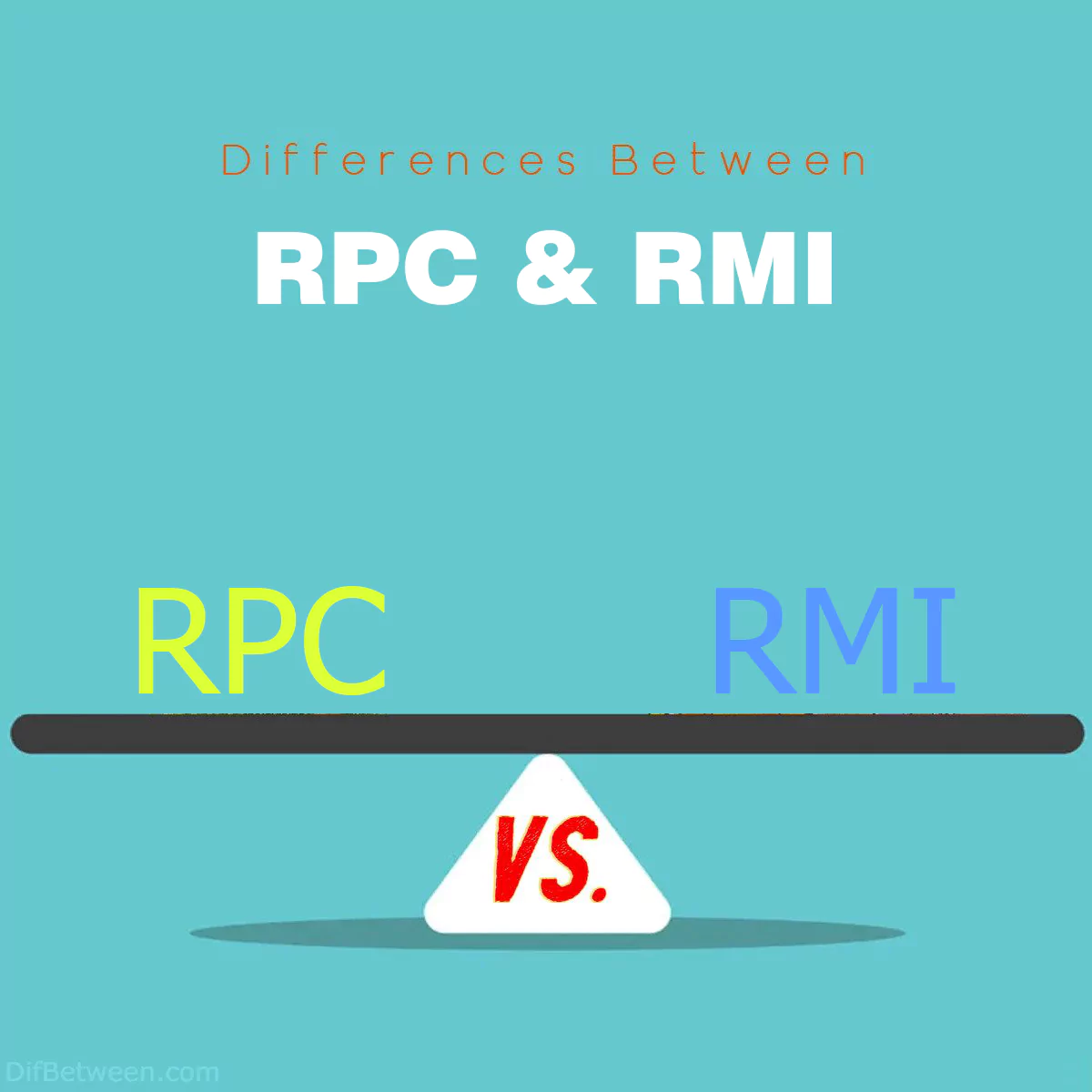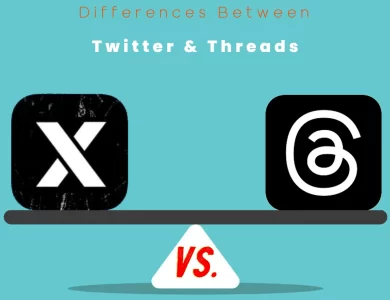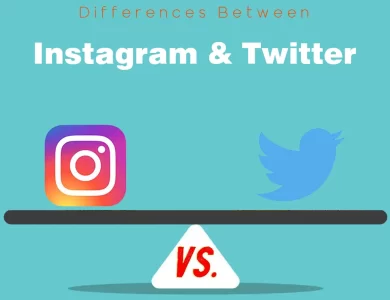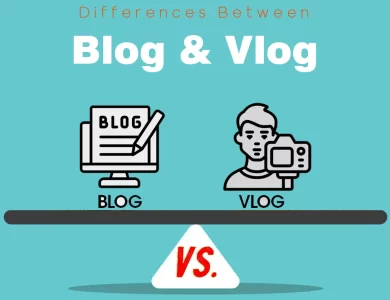
| Aspect | RPC | RMI (Remote Method Invocation) |
|---|---|---|
| Definition and Purpose | Protocol for remote execution of procedures or functions. | Java-specific technology for remote execution of Java methods. |
| Language Compatibility | Language-independent; supports communication between different programming languages. | Language-specific; tailored for Java applications. |
| Data Serialization | Offers flexibility in choosing serialization formats (e.g., JSON, Protocol Buffers, XML-RPC). | Uses Java’s built-in serialization mechanism. |
| Communication Protocol | Supports various communication protocols (e.g., HTTP, TCP/IP) depending on the implementation. | Relies on the Java-specific JRMP (Java Remote Method Protocol) over TCP/IP. |
| Distributed Object Model | Primarily focuses on remote procedure execution; limited built-in support for distributed objects. | Provides a robust distributed object model for Java applications, including object activation and garbage collection. |
| Error Handling and Fault Tolerance | Error handling and fault tolerance mechanisms depend on the specific implementation; may require manual configuration. | Offers built-in error handling using Java exceptions; supports automatic object activation and garbage collection. |
| Security | Security measures (e.g., encryption, authentication) depend on the specific implementation and chosen communication protocol. | Leverages Java’s security model, allowing developers to define access control policies and permissions for remote objects. |
| Community and Ecosystem | Diverse ecosystem with various implementations and libraries for multiple programming languages (e.g., gRPC, Apache Thrift). | Limited to the Java ecosystem; benefits from the extensive Java community and ecosystem. |
Remote Procedure Call (RPC) and Remote Method Invocation (RMI) are two essential technologies in distributed computing that allow programs to communicate and execute functions or methods on remote servers. While they share similarities in their fundamental purpose, they also have distinct characteristics that set them apart. In this comprehensive guide, we’ll explore the key differences between RPC and RMI, shedding light on their unique features, use cases, and how they work.
Differences Between RPC and RMI
RPC (Remote Procedure Call) and RMI (Remote Method Invocation) are both technologies used in distributed computing, but they have distinct differences. RPC is language-independent, allowing communication between systems in different programming languages, whereas RMI is Java-specific, tailored for Java applications. RPC provides flexibility in choosing communication protocols and serialization formats, making it suitable for diverse environments, while RMI relies on Java’s built-in serialization and JRMP protocol. Additionally, RPC primarily focuses on remote procedure execution, while RMI offers a robust distributed object model for Java applications, simplifying object distribution and management. These key differences should be considered when selecting the appropriate technology for your distributed computing needs.
1. Definition and Purpose
RPC (Remote Procedure Call)
RPC, short for Remote Procedure Call, is a protocol that enables a program to execute code or procedures on another system, often across a network. It allows the client to call functions or methods on a remote server as if they were local, abstracting the complexities of network communication. RPC primarily focuses on the execution of procedures or functions, making it a versatile tool for distributed systems.
RPC is language-independent, meaning it can facilitate communication between systems implemented in different programming languages. This flexibility is achieved through the use of interfaces that define the methods available for remote invocation.
RMI (Remote Method Invocation)
RMI, or Remote Method Invocation, is a Java-specific technology that serves the same fundamental purpose as RPC: enabling remote execution of methods. However, RMI is tailored specifically for Java applications. It allows Java objects residing on one machine to invoke methods on Java objects located on another machine, making it a powerful tool for building distributed Java applications.
RMI is tightly integrated with Java’s object-oriented features, allowing remote objects to be treated as if they were local. It provides a more seamless and natural way of working with distributed objects in Java applications.
2. Language Compatibility
RPC
RPC is designed to be language-independent, which means it can facilitate communication between systems implemented in different programming languages. This language-agnostic feature makes RPC a versatile choice for heterogeneous environments where various programming languages are in use. It achieves this compatibility by relying on interface definitions that specify the methods available for remote invocation.
Here’s how it works:
- An interface definition is created, describing the methods that can be remotely invoked.
- Both the client and server systems implement this interface in their respective programming languages.
- The client calls the remote method as if it were a local function, and the RPC framework takes care of the underlying network communication.
This language flexibility is a significant advantage for systems that need to integrate different technologies seamlessly. However, it may require more effort to establish a common ground between languages and handle data type conversions.
RMI
RMI, on the other hand, is language-specific and primarily designed for Java applications. It leverages Java’s object-oriented features, allowing remote objects to be treated as if they were local Java objects. This tight integration simplifies the development of distributed Java applications, providing a more natural and intuitive programming experience.
Since RMI is Java-centric, it restricts interaction to Java-based systems. If you need to communicate with systems implemented in other languages, you’ll need to explore alternative solutions like RPC or other language-independent protocols.
In summary, RPC offers broader language compatibility, making it suitable for heterogeneous environments, while RMI is ideal when you’re working exclusively within the Java ecosystem.
3. Data Serialization
RPC
Data serialization is the process of converting data structures or objects into a format that can be easily transmitted over a network and reconstructed at the receiving end. In the context of RPC, data serialization is a critical aspect of communication between the client and the server.
RPC frameworks often provide various serialization mechanisms, allowing developers to choose the one that best suits their needs. Common serialization formats include JSON, Protocol Buffers, and XML-RPC. The choice of serialization format depends on factors like data complexity, performance requirements, and language compatibility.
Here’s how data serialization works in RPC:
- The client serializes the method’s arguments into a format that can be transmitted over the network.
- The serialized data is sent to the server.
- The server deserializes the data, reconstructing the method’s arguments.
- The server executes the remote method with the deserialized arguments.
- The server serializes the result (if any) and sends it back to the client.
- The client deserializes the result to obtain the final output.
The flexibility to choose serialization formats makes RPC suitable for a wide range of use cases. However, developers must ensure that both the client and server understand the chosen serialization format.
RMI
RMI simplifies data serialization by using Java’s built-in serialization mechanism. Java objects that need to be transmitted between the client and server are automatically serialized and deserialized using Java’s ObjectOutputStream and ObjectInputStream classes.
This built-in serialization is convenient for Java applications, as developers don’t need to implement custom serialization logic. However, it also means that RMI is tightly coupled with Java, limiting its compatibility with systems that do not support Java’s serialization format.
In summary, RPC provides more flexibility in choosing serialization formats, making it adaptable to diverse environments, while RMI relies on Java’s built-in serialization, which is convenient for Java-centric applications.
4. Communication Protocol
RPC
RPC does not prescribe a specific communication protocol, which means it can be implemented over various network protocols, such as HTTP, TCP/IP, and even custom protocols. This flexibility allows developers to choose the most suitable protocol for their specific use case.
Commonly used RPC frameworks like gRPC and Apache Thrift often provide support for multiple protocols, enabling developers to select the one that aligns with their performance and security requirements. For example, gRPC is known for its efficient use of HTTP/2, making it a popular choice for high-performance applications.
The choice of communication protocol in RPC has a significant impact on factors like performance, security, and firewall traversal. It also influences the ease of integration with existing systems.
RMI
RMI is built on top of Java’s Remote Method Protocol (JRMP), which is a proprietary protocol designed specifically for RMI communication. JRMP operates over TCP/IP and handles the underlying network communication for RMI-based Java applications.
While JRMP simplifies communication within the Java ecosystem, it limits RMI’s interoperability with non-Java systems. If your application needs to communicate with components implemented in other programming languages, you’ll need to consider alternative solutions like RPC.
In summary, RPC offers greater flexibility in choosing communication protocols, making it adaptable to a wide range of environments, while RMI relies on the Java-specific JRMP protocol, limiting its interoperability.
5. Distributed Object Model
RPC
RPC typically does not provide a built-in distributed object model. Instead, it focuses on the remote execution of procedures or functions. This means that in RPC, objects themselves are not inherently distributed, and developers need to manage the distribution of data and objects manually, if necessary.
In RPC, the client and server communicate by passing data and method calls, but there is no automatic support for distributed object management. This can be advantageous in cases where a lightweight communication mechanism is preferred, and there’s no need for complex object distribution.
However, if your application heavily relies on distributed objects and requires features like object persistence and automatic object synchronization, you may need to implement these functionalities independently or consider other technologies.
RMI
RMI offers a robust distributed object model that is closely integrated with Java’s object-oriented features. It allows Java objects to be distributed across different JVMs (Java Virtual Machines) and accessed remotely as if they were local objects. RMI handles many complexities of distributed object management, including object activation, garbage collection, and remote references.
This built-in support for distributed objects simplifies the development of distributed Java applications. Developers can focus on the business logic of their application without having to worry about low-level distributed object management tasks.
In summary, RMI provides a comprehensive distributed object model that simplifies the development of distributed Java applications, while RPC primarily focuses on remote procedure execution without built-in support for distributed objects.
6. Error Handling and Fault Tolerance
RPC
Error handling and fault tolerance in RPC largely depend on the specific implementation and the chosen communication protocol. Most RPC frameworks provide mechanisms for error detection and reporting, such as status codes or exceptions.
Common error scenarios in RPC include network failures, server unavailability, and timeouts. Developers need to implement error-handling logic to gracefully handle these situations, ensuring that the client and server can recover from errors and continue functioning.
Fault tolerance mechanisms, such as retrying failed requests or load balancing between multiple server instances, can be implemented at the application level or by using additional technologies like load balancers.
RMI
RMI provides built-in error handling and fault tolerance mechanisms for Java applications. It uses Java exceptions to propagate errors and exceptions between the client and server. This seamless integration with Java’s exception handling makes it easier for developers to identify and handle errors in their distributed applications.
RMI also supports features like automatic object activation and garbage collection, which contribute to fault tolerance by ensuring that objects are available when needed and that unused objects are reclaimed.
While RMI simplifies error handling within the Java ecosystem, it may not provide the same level of flexibility and control as RPC for handling errors in non-Java systems.
In summary, RMI offers built-in error handling and fault tolerance mechanisms tailored for Java applications, while RPC’s error handling depends on the specific implementation and may require more manual configuration.
7. Security
RPC
Security in RPC is a critical consideration, especially when communication occurs over untrusted networks like the internet. RPC frameworks typically provide options for securing communication, including encryption and authentication.
The choice of security measures in RPC depends on the specific implementation and the selected communication protocol. For example, when using HTTPS as the underlying protocol, data can be encrypted using SSL/TLS for secure communication.
Developers need to configure security settings, such as certificates and authentication tokens, to ensure that only authorized clients can access remote procedures. This requires a good understanding of security best practices and potential vulnerabilities.
RMI
RMI also offers security features tailored for Java applications. It leverages Java’s security model, allowing developers to define access control policies and permissions for remote objects and methods.
Java’s security manager provides fine-grained control over which operations a remote client can perform on a Java object. This control extends to methods and objects that are exposed for remote invocation.
While RMI’s security features are well-integrated with the Java ecosystem, they may not directly apply to non-Java systems. If you need to communicate with non-Java components, you’ll need to implement security measures separately or consider alternatives like RPC with custom security configurations.
In summary, RMI provides security features aligned with Java’s security model, making it convenient for securing Java applications, while RPC’s security measures depend on the specific implementation and chosen communication protocol.
8. Community and Ecosystem
RPC
RPC has a broad and diverse ecosystem with various implementations and libraries available for different programming languages. Some popular RPC frameworks include gRPC, Apache Thrift, and JSON-RPC. These frameworks are actively maintained by open-source communities and have extensive documentation and community support.
The diverse ecosystem of RPC ensures that developers have access to a wide range of tools and resources to build distributed systems. Additionally, RPC’s language-agnostic nature fosters collaboration between teams working with different programming languages.
RMI
RMI, being specific to the Java ecosystem, has a more limited scope in terms of community and ecosystem compared to RPC. It benefits from the extensive Java community and ecosystem but is constrained to Java development.
While RMI is a powerful choice for building distributed Java applications, it may not be the best option if your project involves multiple programming languages or if you require cross-platform compatibility.
In summary, RPC offers a broader and more diverse ecosystem with support for multiple programming languages, while RMI is tightly integrated with the Java ecosystem.
RPC or RMI : Which One is Right To Choose?
Choosing between RPC (Remote Procedure Call) and RMI (Remote Method Invocation) depends on your specific project requirements and constraints. Let’s explore some scenarios where one might be more suitable than the other:
Choose RPC (Remote Procedure Call) When:
- Language Diversity: If your project involves multiple programming languages, RPC is a better choice due to its language-independent nature. It can facilitate communication between systems implemented in different languages.
- Communication Protocol Flexibility: If you need the flexibility to choose from various communication protocols (e.g., HTTP, TCP/IP) based on your project’s specific requirements, RPC allows you to do so.
- Data Serialization Customization: When you require control over the serialization format and want to choose a serialization mechanism that aligns with your data complexity and performance needs, RPC provides that flexibility.
- Distributed Object Management: If your project primarily focuses on remote procedure execution and doesn’t require complex distributed object management, RPC’s lightweight approach might be more suitable.
- Community and Ecosystem: If you prefer a broader and diverse ecosystem with support for multiple programming languages, RPC offers a wide range of implementations and libraries maintained by active open-source communities.
Choose RMI (Remote Method Invocation) When:
- Java-Centric Development: If your project is exclusively Java-based and you want a seamless way to invoke remote methods on Java objects, RMI is the natural choice. It offers tight integration with Java’s object-oriented features.
- Simplified Data Serialization: When you prefer a straightforward approach to data serialization and don’t want to implement custom serialization logic, RMI’s use of Java’s built-in serialization can be convenient.
- Distributed Object Model: If your project heavily relies on distributed objects and requires features like automatic object activation, garbage collection, and remote references, RMI’s robust distributed object model simplifies development.
- Built-in Error Handling and Security: When you need built-in error handling using Java exceptions and security features tightly integrated with Java’s security model, RMI provides these capabilities.
- Java Ecosystem: If your project benefits from the extensive Java community and ecosystem, RMI leverages this ecosystem for support and resources.
In summary, RPC is a versatile choice for projects with diverse language requirements, flexibility in communication protocols, and customization needs. On the other hand, RMI excels in Java-centric environments, simplifying remote method invocation and providing a comprehensive distributed object model.
Ultimately, the decision should align with your project’s specific needs, constraints, and the technologies already in use within your development environment.
FAQs
RPC stands for Remote Procedure Call, a protocol that allows a program to execute code or procedures on a remote server as if they were local. It works by defining interfaces that specify the methods available for remote invocation, serializing data, and handling communication between the client and server.
RMI, or Remote Method Invocation, is a Java-specific technology that enables remote execution of Java methods on remote objects. It differs from RPC in its tight integration with Java’s object-oriented features and its focus on Java applications.
Yes, RPC is language-independent and can facilitate communication between systems implemented in different programming languages. It achieves this through the use of interface definitions that outline the methods available for remote invocation.
Yes, RMI is tailored specifically for Java applications. It allows Java objects to invoke methods on remote Java objects, making it a powerful tool for building distributed Java applications.
RPC frameworks often support various serialization formats, including JSON, Protocol Buffers, and XML-RPC. The choice of serialization format depends on factors like data complexity and compatibility.
RMI simplifies data serialization by using Java’s built-in serialization mechanism. Java objects that need to be transmitted between the client and server are automatically serialized and deserialized using Java’s ObjectOutputStream and ObjectInputStream classes.
RPC can be implemented over various communication protocols, such as HTTP, TCP/IP, and custom protocols. Popular RPC frameworks like gRPC and Apache Thrift often provide support for multiple protocols.
Yes, RMI uses the Java Remote Method Protocol (JRMP) over TCP/IP for communication between Java objects on remote machines. It is a proprietary protocol designed for RMI.
RMI provides a robust distributed object model with features like automatic object activation and garbage collection, making it more suitable for projects that heavily rely on distributed objects. RPC primarily focuses on remote procedure execution and may require custom solutions for distributed object management.
Both RPC and RMI offer security options, but the specifics depend on the implementation. Security measures may include encryption, authentication, and access control. RMI leverages Java’s security model for fine-grained control over access to remote objects.
Read More :






